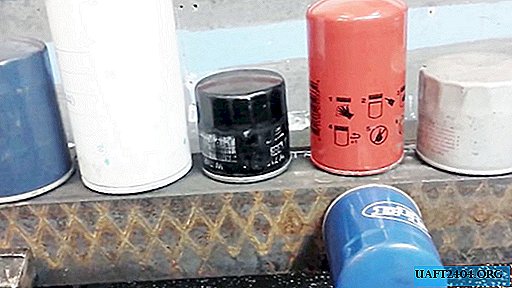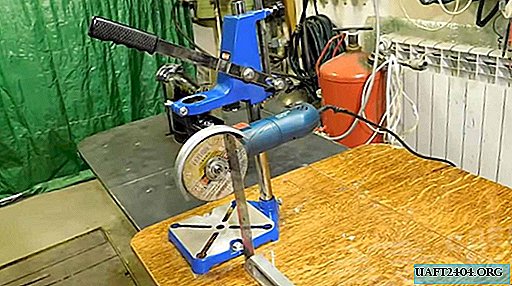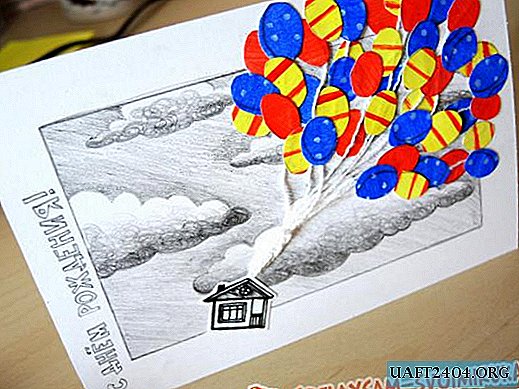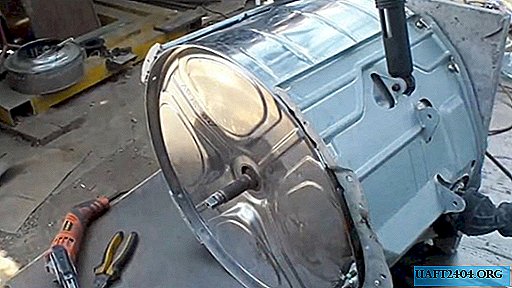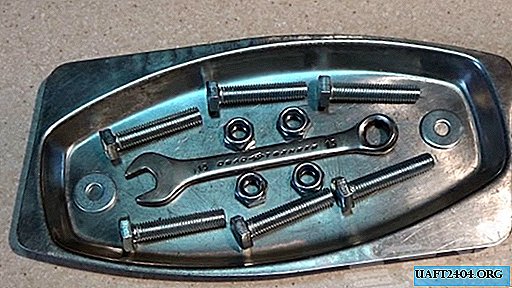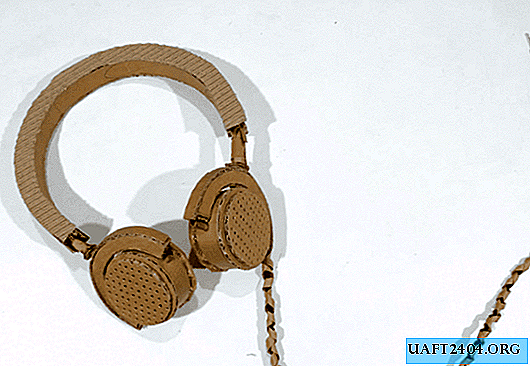Share
Pin
Tweet
Send
Share
Send
Verification of the basis.
Even if it is known for sure that the surface is close to ideal, an additional check will still not hurt. Check the basis for the tile with a plaster rule and a building level. If you are very picky and require your work to comply with GOSTs and SNiPs, then deviation from the level of 1 mm per 1 m is quite acceptable. The clearance is also estimated in the same way when checking the plane with a rule.
Of course, the requirements may be even higher. However, it must be understood that the desire of the tiler to the highest quality is likely to be limited by the quality of the tile. And it, as a rule, does not always correspond to the same GOSTs. For example, expensive imported tiles are often crooked, like a propeller. And attempts to put these specimens aside will not always help to withstand even the simplest tolerances.
Tip:
The base must be not only smooth, but also strong, dust-free and degreased. If there is any doubt about the strength of the surface, it should be carefully primed with a deeply penetrating primer.
After making sure that the base for laying tiles is close to ideal, you can proceed directly to the laying itself.
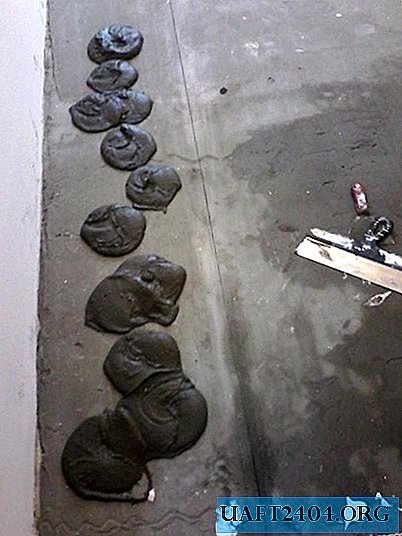
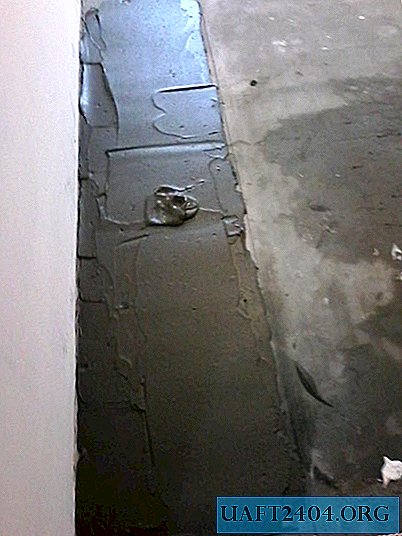

The image of the first row.
Tile work usually begins with the drawing of rows. You can draw not only the line of the first row, but also perpendicular to it. And drawing too many lines makes no sense, since it is almost impossible to predict the run of seams - due to inaccurate dimensions of the tile itself.
Before drawing lines, you need to remember a few rules:
1. Begin laying with the most visible and passageway - mainly from the entrance to the room;
2. The gap between the tile and the wall should not exceed 15 mm, otherwise it will not be covered with a baseboard;
3. Walls are extremely rarely perfectly parallel and perpendicular;
4. Cut and paste narrow pieces, especially in the form of a "carrot", is highly undesirable;
5. If the proposed drawing is a panel, then it should be placed in the most visible place - in the center of the room, and draw lines based on this.
Typically, the tiler tries not to cut the tiles of the first row, which, as a rule, depends on the curvature of the starting wall. Having defined such a wall for yourself, one should find bulging places on its lower part - zeros. This is done using the rule.
It is from these zeros that you need to postpone the size of the tile, starting to draw. Usually an additional 5 mm is added so that the tiles fit exactly. Thus, several marks on the floor are obtained. It is clear that not all of them are on the same line. However, you can choose something average and as close as possible to the perpendicular of the transverse wall without problems. It remains to be convinced that the wall gap will be covered everywhere by the baseboard. And now - the first row is drawn.
Tip:
When spreading tile glue, you need to understand that there will be several batches, and all of them should be of the same consistency. If the surface is really high-quality, then the mixture can be made thinner - like yogurt. An important point is the lack of impurities.

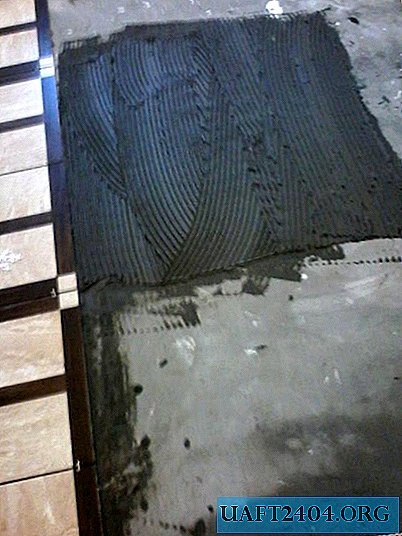
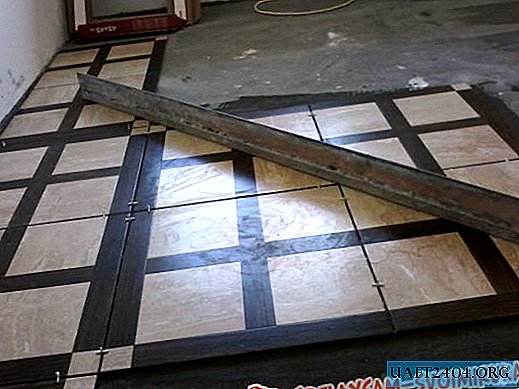
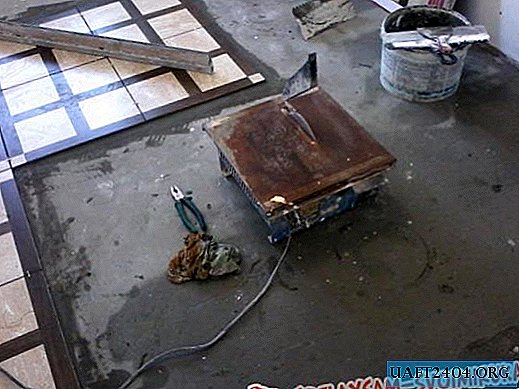
Laying the first row.
Starting from the entrance, do not lay the very first tile so that it does not interfere with walking. Just mark it with a pencil. And under the remaining tiles in the row, glue can be applied.
Tip:
It is most convenient to apply glue gently under a specific number of tiles. The bigger, the better. The main thing is that each of them can be reached.
Throwing a few "cakes" on the floor, they are leveled with a regular spatula and remove all unnecessary "scallop", that is, a notched trowel. By the way, the size of these cloves depends on the quality of the base and the size of the tile. The most common "comb" has teeth measuring 8 - 10 mm. When applying glue, you must try not to gloss over the line at least partially.
Tip:
The size of the crosses used depends on the quality of the tile. For medium-quality floor tiles, 3 mm crosses are usually used.
Now you can lay tiles. This should be done without pressure, immediately leaving gaps under the cross. Having laid the tiles on the floor with glue, you need to insert crosses for the tiles. Then a plaster rule is taken and applied to the face plane to be checked. If necessary, some tiles can be slightly pressed down or lifted. But to attach a significant amount of glue is undesirable, as this will certainly affect in the future. It is better to shift a few tiles in the problem area.
Tip:
In order to slightly raise one corner of the tile, you need to slightly press on the other - the opposite diagonally.
After checking the front plane of the laid tile, you need to make sure that all the tiles are on the line. To do this, you just need to attach the plaster rule to the end of the laid out row of tiles. In addition, it is not out of place to see the correspondence of the plane to the level. And it’s not scary if the base surface is a little horizontal. If only the tile was strictly parallel to it.
Tip:
To check the parallelism of the tile and the base, you can use the beacon. For this purpose, a piece of GVL, GKL or something else having a thickness of 9-10 mm is suitable. This lighthouse simply lies on the base surface, and then a plaster rule is taken into hands.



Laying the central part.
Having laid the first row of tiles, they begin to install the most voluminous and visible part of the surface. The fact is that any ceramic tile is not ideal in its dimensions. Even in one package, specimens may vary in size. Of course, with the help of crosses, this drawback is somewhat leveled. However, as a rule, the clearest and most beautiful site is obtained exactly at the launch site. This site should be placed in a prominent place. And all the shifts are better to divert towards subtle edges.
Tip:
Crosses for tiles, as a rule, are thinner from the end than from the front. Due to this, each cross has two working sizes, which helps a lot when fitting joints.
Floor tiles are often quite large. Therefore, if you apply glue under a large number of tiles, it will be difficult to reach them. However, it’s quite possible to master six pieces. And the tiles glued in one fell swoop are very convenient to correct and shift as required. In addition, having laid such a decent section of the floor, you can immediately lay next to the same. The first, at the same time, does not have time to grab, which means that if necessary, any tile can be corrected.
Tip:
Check the plane of each tile is not worth it, its irregularities will interfere with an objective assessment. You can put a plaster rule on the front surface when the tiles are in a rectangle. If only they did not have time to grab. Then it will be possible to eliminate the shortcomings.
Cutting and stacking pieces.
Many tilers leave clipping the next day so that the tiles dry well. However, when working with a quality prepared surface, laying the main volume will take very little time. For example, a medium-sized kitchen can be laid out in just a couple of hours. The question is, why not immediately do the pruning?
And in order not to stomp on fresh tiles, pruning is done along the way with the laying of the main volume. Of course, in some places you have to leave the paths, which are also incidentally and will be laid with tiles.
Tip:
Often the glaze pattern does not allow you to cut and rotate the pieces in random order. However, to avoid over-spending the tiles, you can find completely invisible places, for example, under the kitchen.
The cutting of ceramic or porcelain tiles is carried out by various tools and technologies:
• Angle grinder (grinder);
• Electric tile cutting machine;
• Manual tile cutting machine;
• Exotic methods (glass cutter, tungsten string, jigsaw with a tungsten file).
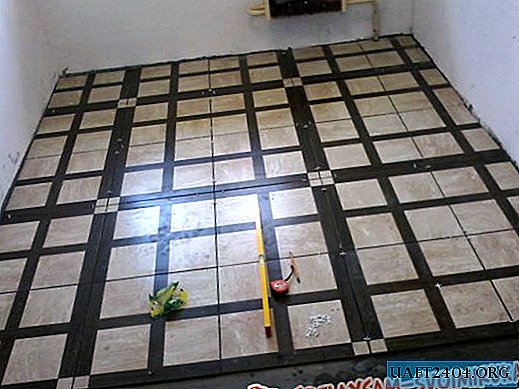
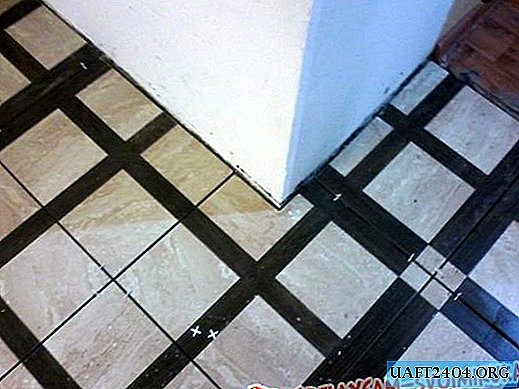
An inexperienced tiler, perhaps, will most conveniently work with an electric tile cutter. True, it is not always available, but a positive result of its application is guaranteed. Moreover, all the cut edges, as a rule, hide under the baseboard.
But the usual little grinder is the easiest to get. And circles for cutting porcelain tiles find no problem. True, the use of this tool requires some skills, but you can just practice.
Tip:
Problems can arise with cutting holes, say, under heating pipes. But, in fact, this difficulty is solved by ordinary pliers or a small gas wrench. They just need to bite off a little from the tile. The main thing is not to try to bite too much so as not to break it wrong.
Pieces are glued, as a rule, without problems. By the way, it is often easier to apply glue to a piece, rather than to the base surface. The main thing is to moisten it with water.
After allowing the entire tile to dry, grout the inter-tile seams.
Share
Pin
Tweet
Send
Share
Send

